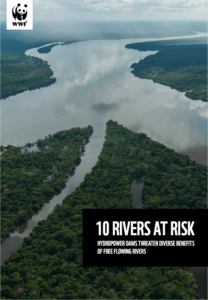CSPA Asks San Francisco Water Agency to Withdraw Voluntary Agreement
CSPA and thirteen other conservation and fishing organizations wrote a letter to the San Francisco Public Utilities Commission on September 9, 2020 requesting that the Commission withdraw its support for a proposed Tuolumne River Voluntary Agreement. CSPA and others also presented the request to the SFPUC meeting the same day.
The request follows a scientific peer review of the fish population models that provide much of the purported basis for the Voluntary Agreement. The review by Anchor QEA of Seattle reached the following conclusion about the salmon population model developed by the Turlock and Modesto irrigation districts:
The model, as configured, indicates that the status of the Chinook salmon population is extremely precarious and bold actions will be needed to prevent extirpation. This need, according to the model, would best be met by very substantial increases in flow releases during spring (the period of active smolt outmigration from the river). (Peer Review p. 3)
The review also rejected the repeated claim of SFPUC and the irrigation districts that reducing the number of bass and other predatory fish in the Tuolumne River would significantly increase the survival and populations of salmon:
[T]he Chinook salmon production model cannot identify the number of predators that would need to be removed or how much of a reduction in consumption would be required to achieve a significant increase in smolt-to smolt survival. The response from predator control is assumed, not predicted. (Peer Review p. 5, emphasis added)
The September 9 letter from conservation and fishing groups asks the SFPUC:
We urge the Commission to direct SFPUC staff to withdraw the flawed proposal for a Voluntary Agreement on the Tuolumne River and to cease making any claims of fishery benefits from the proposal, which are based on these flawed models. Instead of focusing on ways to reduce the amount of water flowing in the Tuolumne River, we encourage you to work with us to find ways to support investments in local and regional water supply projects that would create good paying local jobs, improve the resiliency of the water systems, and help sustain the economy with reduced diversions from the Tuolumne River. Across California, many water agencies are far ahead of the SFPUC in making these investments.
The SFPUC commissioners agreed to agendize the peer review at a future meeting.
The letter to SFPUC was updated on September 14 to reflect the addition of the Nature Conservancy as the fifteenth signatory. Otherwise, the letter was unchanged from September 9. The updated letter is available here:
Final Letter to SFPUC re peer review and Tuolumne VA 9-14-20.


